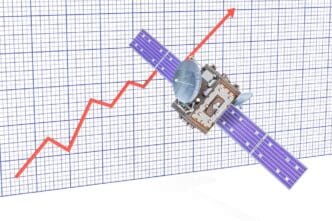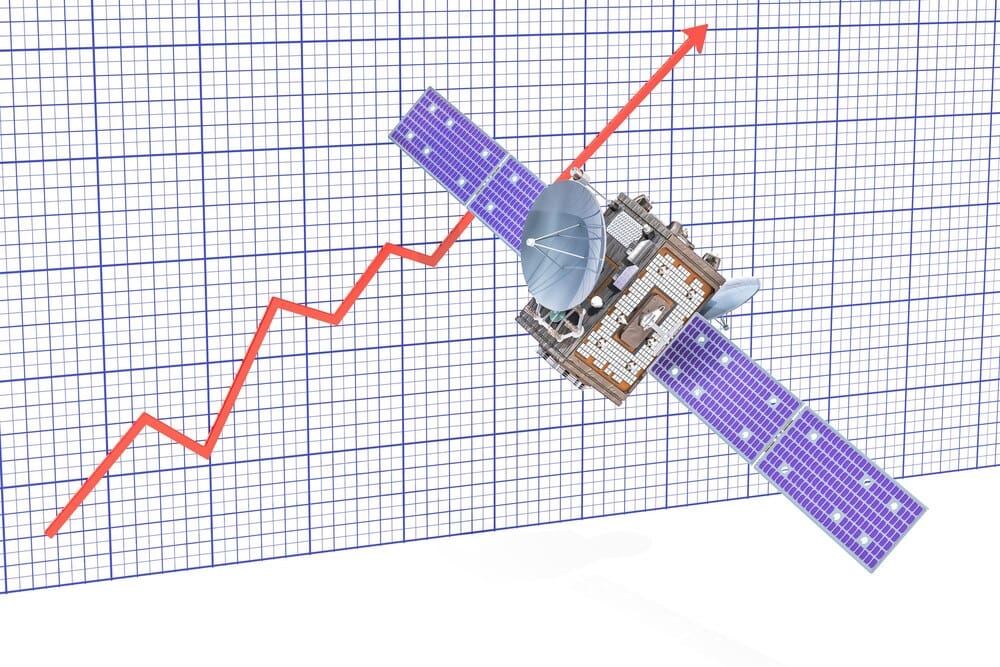For investors seeking a disciplined path to financial growth, the “Core and Satellite” strategy offers a compelling framework that balances the stability of broad market exposure with the targeted potential of higher-risk, higher-return assets. This approach involves dedicating the majority of a portfolio—the core—to low-cost, diversified index funds or ETFs that track major markets, providing a stable foundation. The smaller portion—the satellites—is then allocated to more specific investments, such as sector-based funds, thematic trends, or even individual stocks, allowing investors to pursue outperformance. By structuring a portfolio this way in a standard brokerage or retirement account, individuals can systematically manage risk, keep costs low, and satisfy the desire for more active investment choices without jeopardizing their long-term financial goals.
What is a Core and Satellite Portfolio?
At its heart, the Core and Satellite strategy is an approach to portfolio construction that divides investments into two distinct categories: a large, stable core and several smaller, more dynamic satellites. Think of it like a solar system. The core is the sun—massive, stable, and the gravitational center that holds everything together. The satellites are the planets, each with its own unique characteristics, orbiting the sun and adding dynamism to the system.
Typically, the core makes up between 70% and 90% of the total portfolio value. This portion is built with passively managed, highly diversified investments that aim to match the performance of the broader market, not beat it. The goal here is consistency, low turnover, and minimal cost.
The remaining 10% to 30% is allocated to the satellite holdings. This is the portion of the portfolio where an investor can take on more calculated risks to seek “alpha,” or returns above the market average. These investments are more concentrated and can be actively managed, allowing for tactical adjustments based on market research and personal conviction.
Designing Your “Core” Holding
The success of the entire strategy hinges on the strength and stability of your core. This is the bedrock of your financial future, designed to capture the reliable, long-term growth of global markets. The construction of your core should be guided by three main principles: broad diversification, low cost, and passive management.
Characteristics of a Strong Core
A robust core should provide exposure across different asset classes and geographies. This means not just investing in U.S. stocks, but also including international stocks from both developed and emerging markets. It should also incorporate bonds to act as a buffer against stock market volatility, providing stability during downturns.
Cost is a critical factor. Since the core aims to match the market, minimizing expenses is one of the few variables you can control. You should seek out funds with the lowest possible expense ratios, as high fees can significantly erode your returns over time. This is why passively managed index funds and exchange-traded funds (ETFs) are the ideal vehicles for the core.
Examples of Core Investments
Building a core doesn’t need to be complicated. A handful of broadly diversified, low-cost ETFs can form a powerful foundation. Common choices include:
- Total U.S. Stock Market ETFs: Funds like the Vanguard Total Stock Market ETF (VTI) or the iShares Core S&P Total U.S. Stock Market ETF (ITOT) provide exposure to thousands of U.S. companies, large and small.
- Total International Stock ETFs: To diversify geographically, funds such as the Vanguard Total International Stock ETF (VXUS) or the iShares Core MSCI Total International Stock ETF (IXUS) cover thousands of stocks outside the United States.
- Total Bond Market ETFs: For fixed-income exposure, funds like the Vanguard Total Bond Market ETF (BND) or the iShares Core U.S. Aggregate Bond ETF (AGG) hold a wide range of investment-grade government and corporate bonds.
For those seeking maximum simplicity, an “all-in-one” solution like a target-date fund can even serve as a pre-built core, as it automatically allocates across global stocks and bonds based on a specific retirement timeline.
Selecting Your “Satellite” Investments
The satellite portion of your portfolio is where you can move beyond simple market tracking and express your own investment theses. This is your opportunity to tilt your portfolio toward areas you believe have exceptional growth potential. While these investments carry higher risk, they are limited to a small portion of your overall assets, containing their potential impact.
Types of Satellite Investments
Satellite holdings can take many forms, allowing for significant customization based on your research and interests. Popular categories include:
- Sector-Specific ETFs: If you believe the technology or healthcare sector will outperform the broader market, you could add an ETF like the Technology Select Sector SPDR Fund (XLK) or the Health Care Select Sector SPDR Fund (XLV).
- Thematic ETFs: These funds focus on long-term disruptive trends, such as clean energy (e.g., iShares Global Clean Energy ETF – ICLN), robotics and artificial intelligence (e.g., ROBO Global Robotics and Automation Index ETF – ROBO), or cybersecurity (e.g., ETFMG Prime Cyber Security ETF – HACK).
- Factor-Based ETFs: These satellites target specific drivers of return, known as “factors.” You might add a tilt toward small-cap stocks (e.g., Vanguard Small-Cap ETF – VB), value stocks (e.g., Vanguard Value ETF – VTV), or high-growth stocks (e.g., Vanguard Growth ETF – VUG).
- Geographic Focus: You might want to overweight a specific country or region you believe is poised for growth, such as an emerging markets ETF (e.g., iShares MSCI Emerging Markets ETF – EEM) or a fund focused on a single country like India.
- Individual Stocks: For those who enjoy deep-dive research, allocating a small part of the satellite portfolio to a few high-conviction individual company stocks is a common approach. This requires significant due diligence and a higher tolerance for risk.
- Alternative Assets: Some investors use satellites to gain exposure to assets with low correlation to the stock market, such as Real Estate Investment Trusts (REITs) via an ETF like the Vanguard Real Estate ETF (VNQ) or commodities like gold.
How to Build and Allocate Your Portfolio
Constructing your Core and Satellite portfolio is a methodical process that starts with self-assessment and ends with strategic implementation.
Step 1: Define Your Risk Tolerance and Goals
First, determine your overall asset allocation and the appropriate split between your core and satellite holdings. An investor with a lower risk tolerance or a shorter time horizon might choose a 90% core and 10% satellite allocation. A younger investor with a higher risk tolerance might opt for a 70/30 split, allowing for a greater pursuit of alpha.
Step 2: Construct the Core
Using your desired overall asset allocation, build your core. For example, if your target is a 70/30 stock/bond mix and you’ve chosen an 80/20 Core/Satellite split, your core (80% of the portfolio) would be constructed to reflect that 70/30 goal. You would select your chosen low-cost index funds to build this foundation.
Step 3: Add the Satellites
With the core in place, allocate the remaining percentage (in this example, 20%) to your chosen satellites. It’s wise to diversify even within this smaller portion. Instead of putting the entire 20% into a single thematic ETF, you might allocate 5% to four different satellite ideas, spreading the risk across different sectors, themes, or asset types.
The Benefits of the Core-Satellite Approach
This strategy offers several distinct advantages that appeal to a wide range of investors, from discerning beginners to seasoned market participants.
Cost Efficiency
Because the vast majority of your assets are held in low-cost, passive index funds, the overall blended expense ratio of your portfolio remains very low. This prevents fees from significantly diminishing your long-term returns, a common pitfall of fully active strategies.
Risk Management
The stable core acts as an anchor, ensuring that the bulk of your wealth grows steadily with the market. Any losses incurred by a speculative satellite investment are cushioned by the performance of the core, preventing a single bad bet from derailing your entire financial plan.
Behavioral Discipline
Many investors feel the urge to chase hot stocks or react to market news. The satellite portfolio provides a structured, controlled outlet for this impulse. By ring-fencing these activities to a small portion of assets, it helps investors “scratch the itch” for active trading without impulsively altering their core long-term strategy.
Potential Drawbacks and Considerations
No strategy is without its trade-offs, and the Core-Satellite approach is no exception. It requires more effort than a purely passive strategy and introduces the possibility of underperformance if satellite picks don’t pan out.
The primary drawback is complexity. Managing a Core and Satellite portfolio requires more research and ongoing attention than a simple three-fund portfolio. You must not only select your core funds but also actively research and monitor your satellite holdings.
There is also the risk of poor satellite selection leading to performance drag. If your active bets underperform the broad market, your overall return will be lower than if you had simply invested 100% in your core index funds. The pursuit of alpha is a double-edged sword that can just as easily lead to negative alpha.
Managing and Rebalancing Your Portfolio
Once established, a Core and Satellite portfolio requires periodic maintenance. It’s wise to review your holdings at least annually to ensure they remain aligned with your goals. This process involves rebalancing—trimming positions that have grown beyond their target allocation and reallocating the funds to those that have shrunk.
For example, if your tech satellite has a stellar year and grows from 5% to 8% of your portfolio, you would sell off the excess 3% and reinvest it in underperforming areas to return to your original targets. This enforces a “buy low, sell high” discipline and keeps your risk level in check.
Ultimately, the Core and Satellite strategy provides a sophisticated yet accessible method for building wealth. It marries the proven, low-cost reliability of passive investing with the targeted, opportunistic nature of active selection. For the modern investor looking for a framework that offers structure, discipline, and flexibility, it represents a powerful and effective path toward achieving stable, long-term growth.







